News
Return to Scapa Flow: Beyond the Battleships
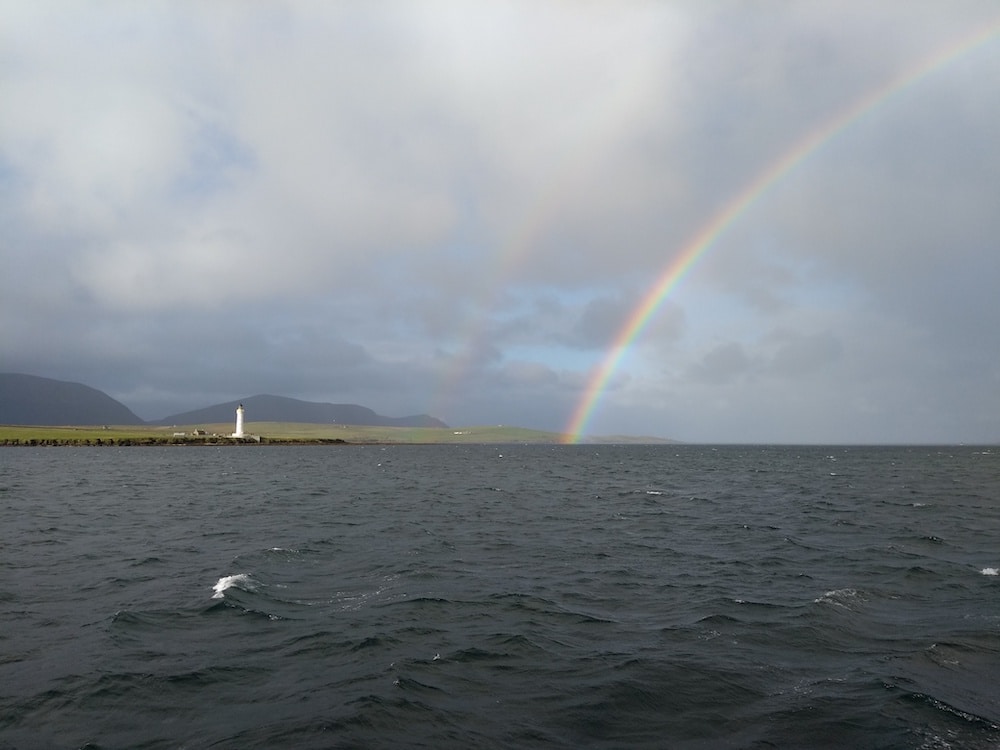
We had the opportunity to return to Scapa Flow this fall, during the centenary year of the scuttling of the German Fleet. As always it was with great excitement that we arrived in Stromness, added to that we were diving on a boat filled with our dive friends from around the world. With the reunion and high experience level of the boat, it was certain to be a fun week!
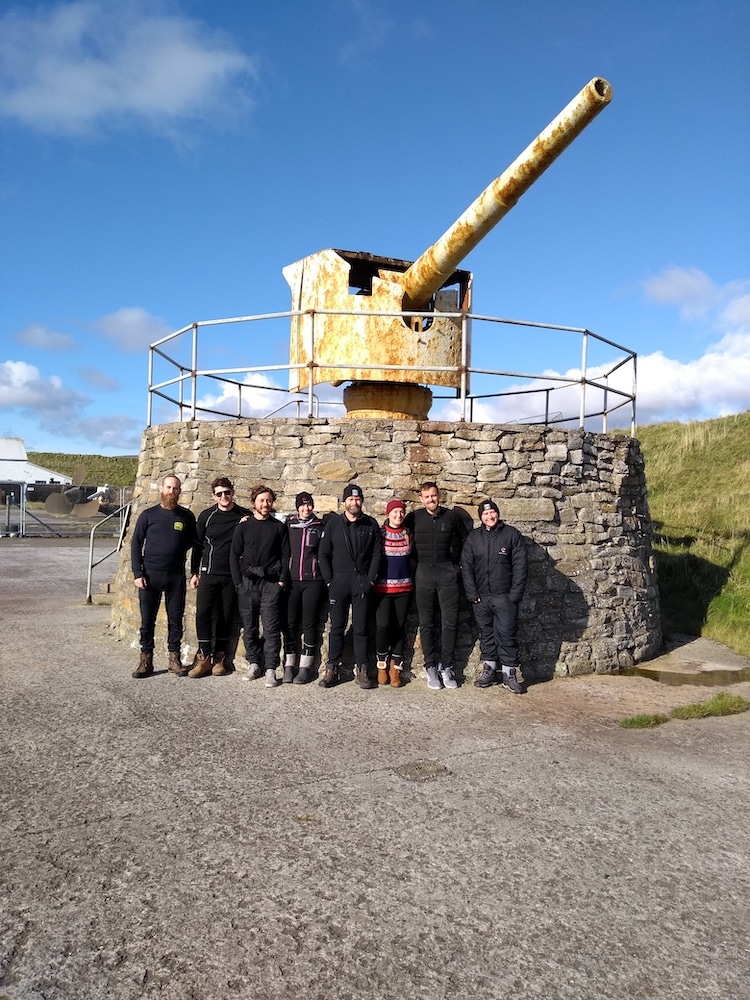
The Dream Team
The itinerary for the week included the usual celebrities, the König, Karlsruhe, Kronprinz Wilhelm, Brummer, Cöln and F2 as well as some rather special dives including the Markgraf. Following the centenary commemorations many of the German High Seas Fleet vessels have had flags placed on the wrecks, which gave an interesting new feature to search out in additon to the metal structures and marine life.
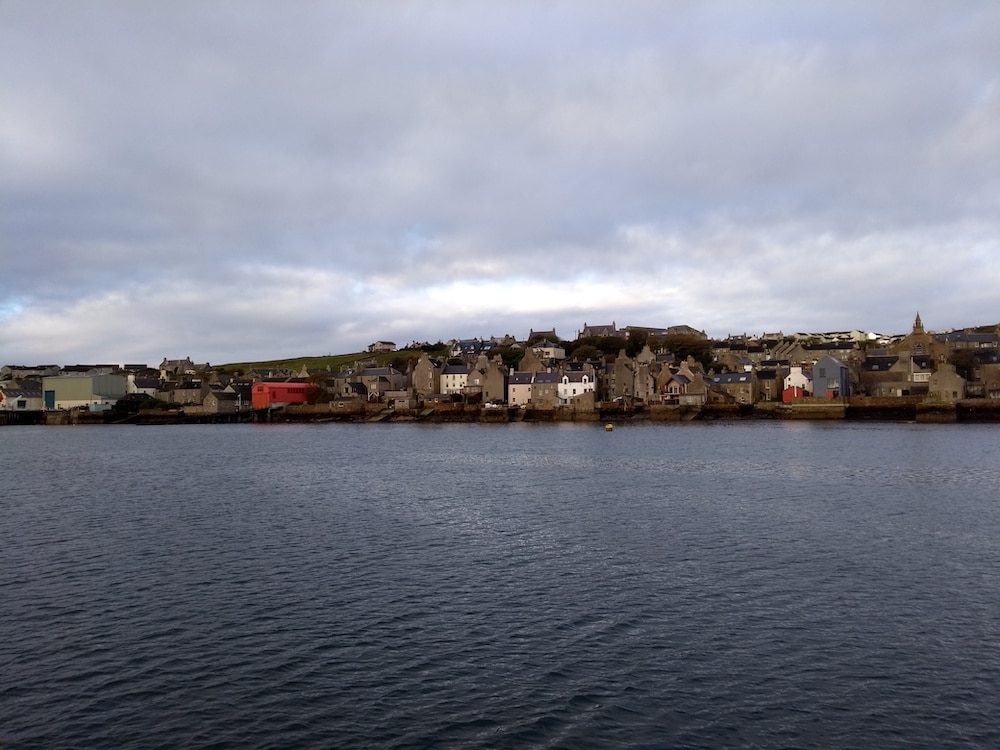
Stromness
The massive German battleships and cruisers are rightfully the stars of the Flow and for our technical divers the collosal bow of the Markgraf was the experience of the week… but we found that there are some interesting additional options if you have the time and crew to take you to different dive sites. We were fortunate enough to dive three wrecks that we hadn’t before: the sunken U-Boat UB-116, the Bayern turrets, and the blockship Tabarka.
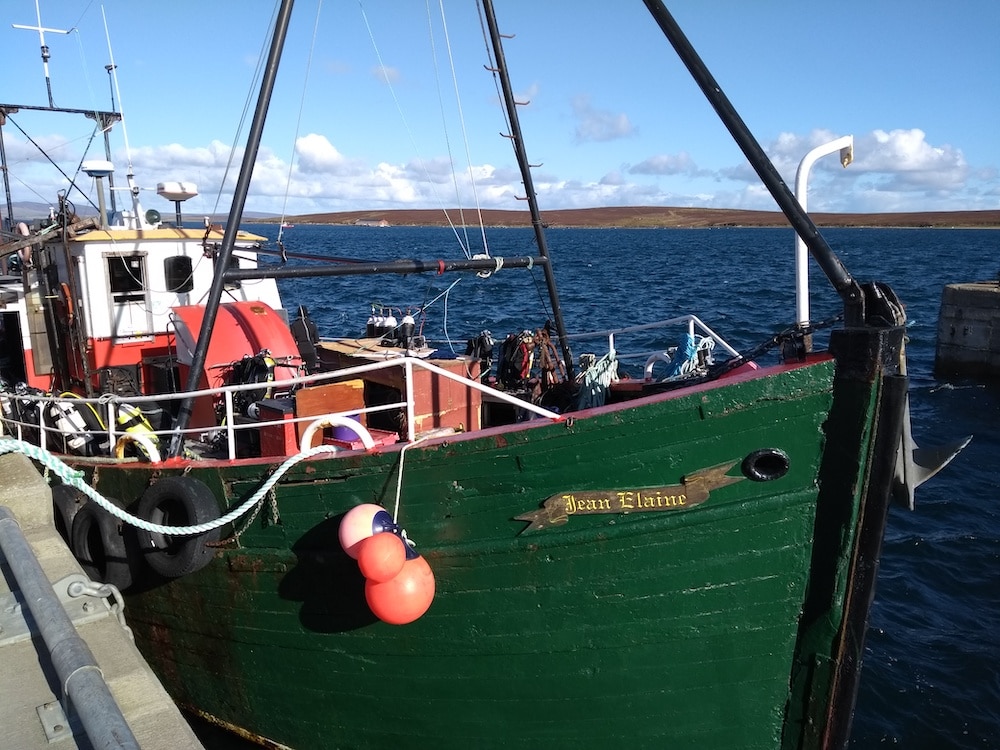
Our Dive Boat
UB-116
The UB-116 was the last U-Boat to be sunk in WWI. On October of 1918, with the aim of penetrating Scapa Flow and detroying as many vessels as possible, UB-116 unknowingly entered the minefield protecting Hoxa Sound and was destroyed. She was raised in 1919, but foundered at the mouth of Pan Hope. A controlled explosion was conducted to deal with the live torpedoes, and as such the submarine is very broken up with the conning tower as one of the few remaining identifiable features.
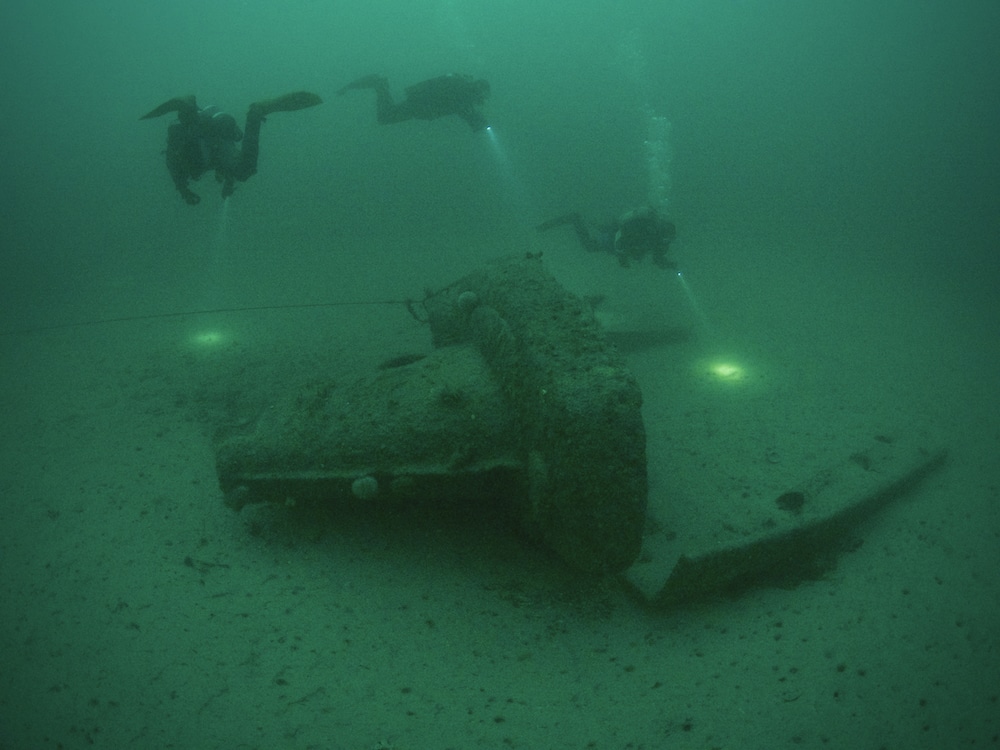
The wreck of UB-116 is pretty small, and relatively shallow for Scapa Flow, so it is usually done as a second dive of the day. We enjoyed our short drop into the site as it was something different to see. The detached conning tower lying about 10 meters from the rest of the hull was still intact and a delight to swim around. The rest of the hull was mostly tangled metal wreckage but we managed to see a nice dogfish swimming around the wreckage. Plus now we can say we have dived a submarine!
Bayern Turrets
The battleship SMS Bayern was interned in Scapa Flow with the German High Seas Fleet and scuttled on 21st June 1919. During salvaging in 1934, the extraordinarily heavy armored turrets of the Bayern slipped out of their hull and remain upside down on the ocean floor to this day. They now sit at a max depth of 45m.
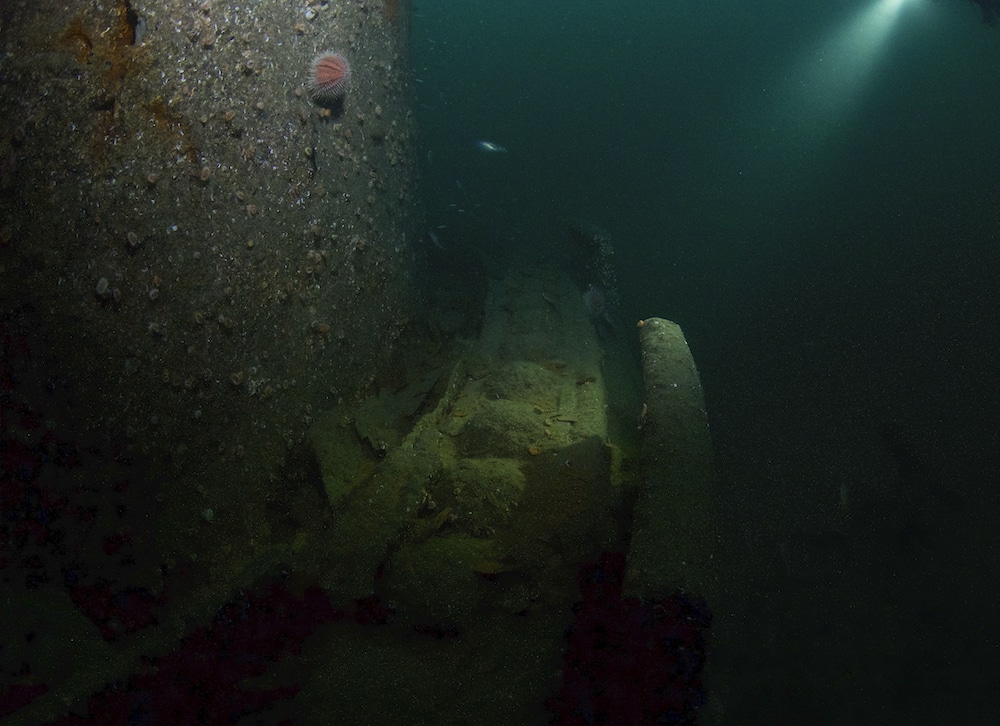
Our dive on the Bayern turrets dive site offered a look at something special: the insides of the 15-inch guns of the battleship Bayern. At 38m, our bottom time was limited, but we were still able to circle and get good looks at two of the mighty turrets. The highlight was seeing the tracks of 10-inch steel ball bearings on which the turrets used to rotate. This was quite a unique dive and had us wishing for more dive time.
Tabarka
The Tabarka was originally sunk as blockship in Kirk Sound in 1941, but was raised and re-sunk as a blockship in Burra Sound in 1944. She is now one of the 3 remaining blockships in the flowing current of the Burra Sound, resting upside down at 15m, she is only divable at slack tide.
The wreck of the block ship Tabarka was a surprise favorite of ours as the best dive of our week in Scapa. In this area of extreme tides, not only do you need an experienced skipper to drop you in at the right place, but you need to do a negative entry to get down to the wreck as quickly as possible. One upside of the current here is that it means there are less suspended particles in the water and better visibility than at other spots in the Flow and also the tidal currents nourish the marine life that clings to the wreck.
Our dive group managed to get straight down to the bottom (it wasn’t deep, maybe 12m or so), and then fin right up to the side of the Tabarka. The wreck was roughly split in two halves, and each side offered not only respite from the current, but an ethereal, almost zen-like atmosphere with sunlight streaming in through windows and cutouts in the hull, along with strands of kelp wafting in the current. The floor and inside of the wreck was festooned with life and we had ample time to slowly explore each half of the wreck, enjoying the experience for around 45 minutes. The return to our boat was a dramatic conclusion to the dive, with a carefully coordinated fast drift in the current as we ascended slowly. Those with a keen eye spotted the remains of other blockship wrecks below us as we drifted. Back on board it was clear from all the grinning faces that we were not the only ones totally enthralled by this wreck.
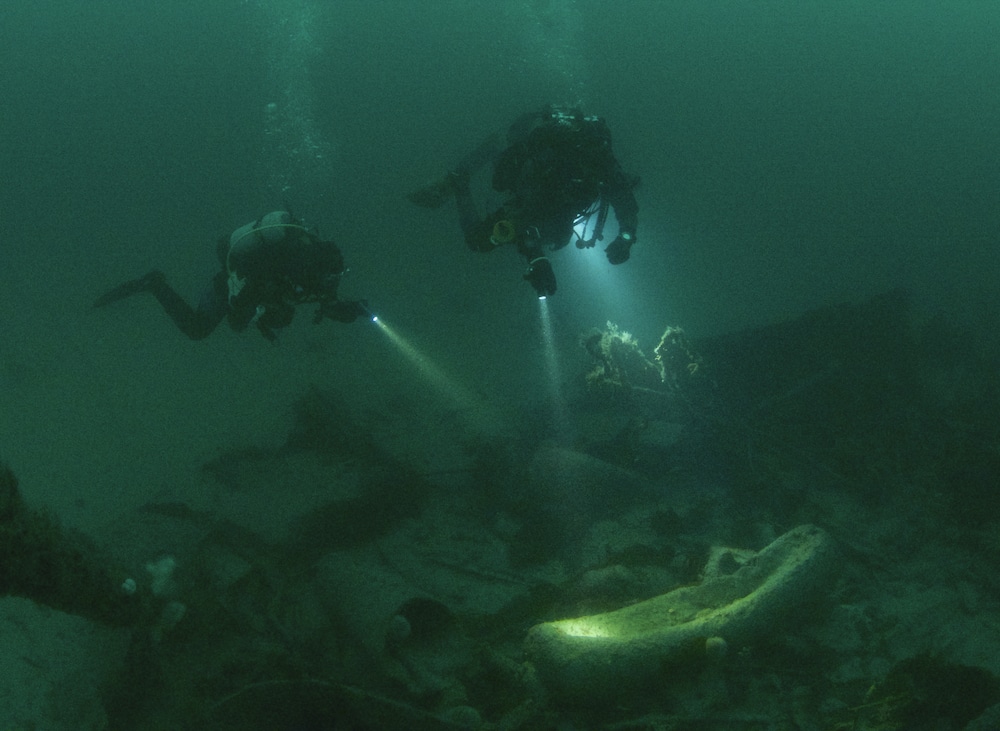
One final note … underwater photography in Scapa Flow is hard! To my chagrin it took me 7 dives to figure out that a standard fisheye lens with two strobe setup doesn’t really cut it there, given the average visibility was about 4 meters. The solution: as many thousands of lumens of off-camera lighting as you can manage. A team of lighting assistants would also be rather helpful! Volunteers anyone? The best I could manage on this trip were a few grainy black and white conversions, but at least I’ll know better before our next visit!
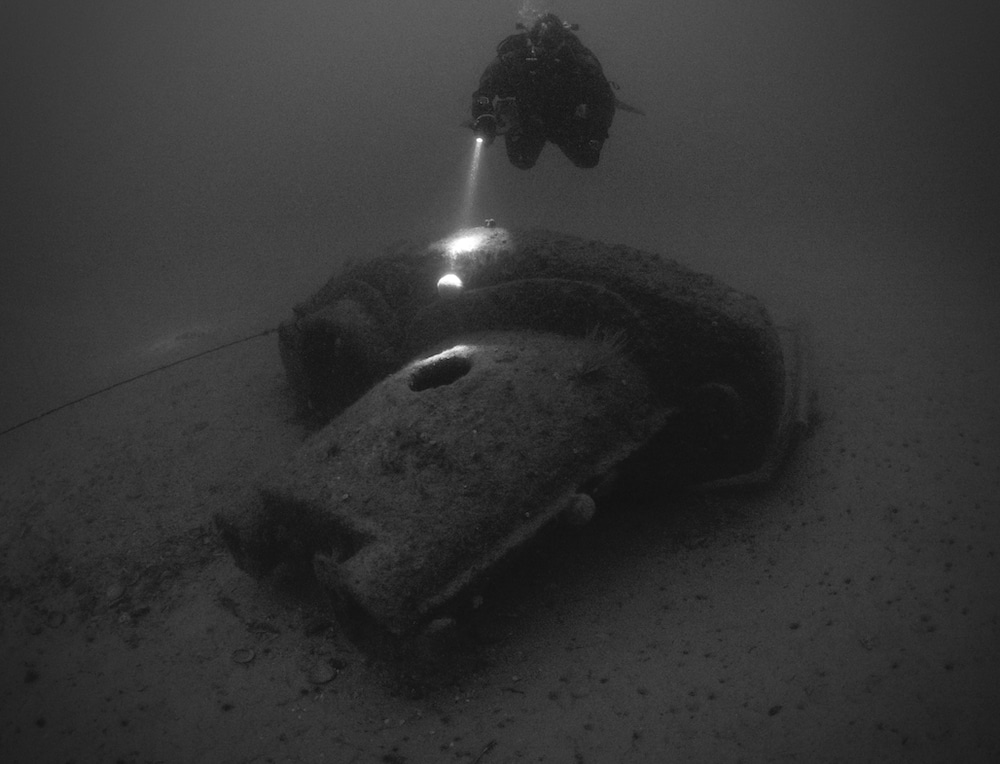
Follow more of CJ and Mike’s diving adventures at www.bimbleintheblue.com.
Marine Life & Conservation Blogs
Book Review: Shells of the World

Shells of the World: A Natural History by M.G. Harasewych
Shells of the world is a guide to the world of marine, shelled molluscs. And what a varied and interesting world it is. Some of my favourite things to find on a dive are detailed in this book, including disco clams (or Electric File Clams as they are correctly names), the cephalopods, giant clams and sea hares. There are also many on my wish list, top of which is the Nautilus.
Each chapter provides a detailed description of the species, along with beautiful images. You can dive deeper and discover where they live, both with global distribution and the habitat they prefer. Learn about their diet, reproduction and diversity.
Having dipped in and out of this lovely book over the past few weeks, it has inspired me to learn more about this group of animals that we see on most divers, wherever we are in the world. Some of the shells are incredibly intricate and beautiful. I have always agreed with never collecting, or touching, marine life. The description of a certain set of cone shells should be a warning to those that are happy to pick up marine life! One of the cone shells has a local name called the cigarette snail. Why? Because once the venom is in your system from this animal, you only have time to smoke one cigarette before the affects of the venom are fatal!
What the publisher says:
Mollusks are invertebrate animals with a remarkable natural history and a rich fossil record, and their shells are prized for their breathtaking variety and exquisite beauty. Shells of the World provides a wide-ranging look at the incredible diversity of marine mollusks. An informative introduction outlines the lineages covered, followed by a directory section, split into classes, that profiles a broad selection of different taxa to give a sense of their sheer numbers and variety.
- Features hundreds of beautiful color photos, depicting both the live animals and their shells
- Discusses mollusk evolution, anatomy, life cycles, behavior, and ecology
- Describes unique characteristics, distribution, habitat, and size
- Provides valuable insights into the conservation of the world’s marine mollusks
- Ideal for malacologists and shell collectors everywhere
About the Author:
M. G. Harasewych is research zoologist emeritus and former curator in the Department of Invertebrate Zoology at the Smithsonian Institution’s National Museum of Natural History. A fellow of the American Association for the Advancement of Science, he is the author (with Fabio Moretzsohn) of The Book of Shells: A Life-Size Guide to Identifying and Classifying Six Hundred Seashells.
Book Details
Publisher: Princeton University Press
Hardcover
Price: £25
ISBN: 9780691248271
Published: 9th April, 2024
Gear News
Go anywhere with Stahlsac
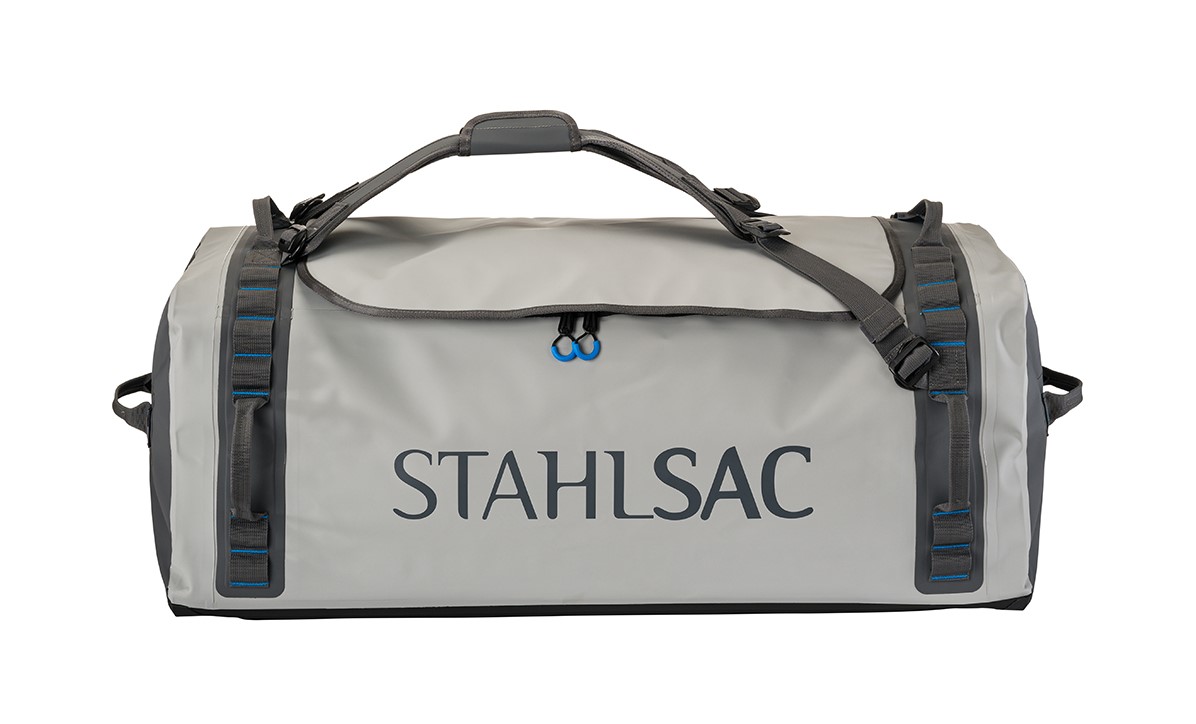
Stahlsac dive bags and travel luggage are built for our community of divers, surfers, kayakers and outdoor explorers who need bags that are constructed with durability, toughness, and 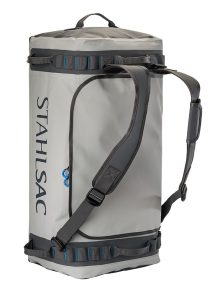 the highest quality the industry has ever seen. We were founded by one man determined to build better watersports and dive bags, and today, that mission is carried on by many. Adventure doesn’t just present itself; it requires discovery. When we design dive bags, we make sure they are tough enough for you to explore in all conditions—warm and cold, wet and dry—to the nearest and farthest reaches of the earth. And for those times you want to push the boundaries of adventure, Stahlsac dive bags make sure you can truly GO ANYWHERE.
the highest quality the industry has ever seen. We were founded by one man determined to build better watersports and dive bags, and today, that mission is carried on by many. Adventure doesn’t just present itself; it requires discovery. When we design dive bags, we make sure they are tough enough for you to explore in all conditions—warm and cold, wet and dry—to the nearest and farthest reaches of the earth. And for those times you want to push the boundaries of adventure, Stahlsac dive bags make sure you can truly GO ANYWHERE.
Abyss Duffels
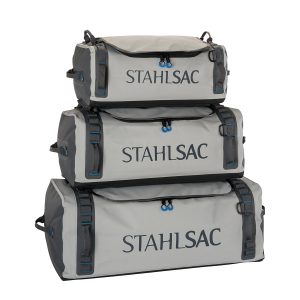 Made to be your partner-in-crime on every adventure, Stahlsac’s Abyss Duffels protects your gear from Mother Nature’s worst. Tough and 100% waterproof with double-TPU nylon material that shrugs off daily wear-and-tear, and RF-welded seams further boost the bag’s potential for lifelong exploring. Get Wet. Get Lost. Go Anywhere with Abyss.
Made to be your partner-in-crime on every adventure, Stahlsac’s Abyss Duffels protects your gear from Mother Nature’s worst. Tough and 100% waterproof with double-TPU nylon material that shrugs off daily wear-and-tear, and RF-welded seams further boost the bag’s potential for lifelong exploring. Get Wet. Get Lost. Go Anywhere with Abyss.
- A weatherproof duffel for trips, travel, and adventure
- Ultra-durable double-TPU nylon protects your gear
- Material repels water and keeps your equipment dry
- RF-welded seams are flush, tough, and waterproof
- Removable straps transform duffel into backpack
- Zippered internal stow compartments carry essentials
- External zippered flap is easy to open and close
- Welded external handles make transporting a breeze
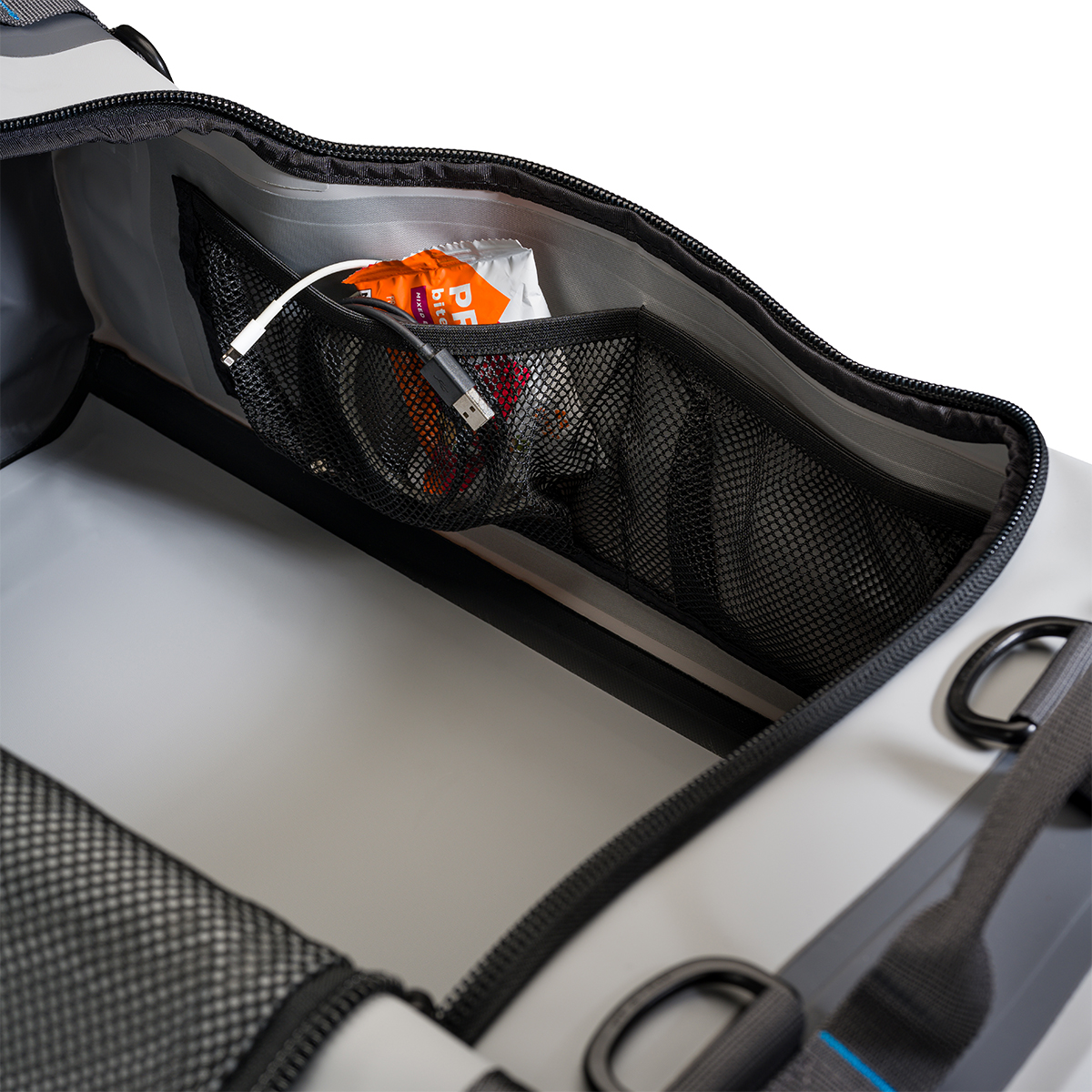
Panama Mesh Backpack
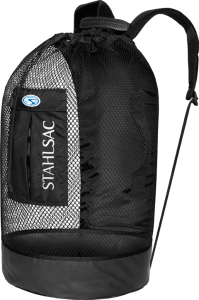 The most copied design in scuba diving, the Stahlsac Panama Mesh Backpack is the “original” design and features two high-density foam padded shoulder straps, extra durable polyester mesh, duffel bag handles and our unique zippered dry pocket inside that combines with a wet pocket outside. The bottom’s built from reinforced 18-gauge PVC nylon to combat the wear and tear of your active coastal lifestyle, and, as a bonus in every bag, we supply a 12″ x 12″ mesh drawstring satchel for extra stowing utility. Pack up your beach kit and go.
The most copied design in scuba diving, the Stahlsac Panama Mesh Backpack is the “original” design and features two high-density foam padded shoulder straps, extra durable polyester mesh, duffel bag handles and our unique zippered dry pocket inside that combines with a wet pocket outside. The bottom’s built from reinforced 18-gauge PVC nylon to combat the wear and tear of your active coastal lifestyle, and, as a bonus in every bag, we supply a 12″ x 12″ mesh drawstring satchel for extra stowing utility. Pack up your beach kit and go.
- Density foam padded shoulder straps
- Outside wet/dry pockets
- 2 Carry handles
- Tough, snag-resistant polyester mesh
- Reinforced PVC bottom
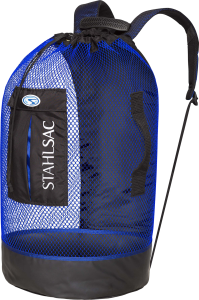
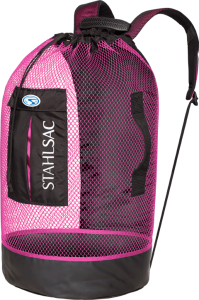
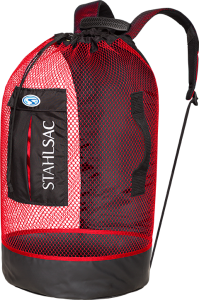
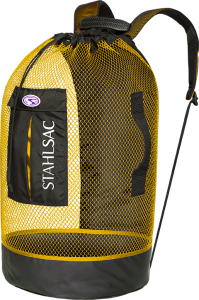
For more information about Stahlsac bags, visit www.stahlsac.com/dive-bags.
Sea & Sea is the home of Stahlsac and other leading diving brands in the UK.
-

 News3 months ago
News3 months agoCapturing Critters in Lembeh Underwater Photography Workshop 2024: Event Roundup
-

 Marine Life & Conservation Blogs3 months ago
Marine Life & Conservation Blogs3 months agoCreature Feature: Swell Sharks
-

 Gear Reviews4 weeks ago
Gear Reviews4 weeks agoGEAR REVIEW – Revolutionising Diving Comfort: The Sharkskin T2 Chillproof Suit
-

 Blogs2 months ago
Blogs2 months agoMurex Resorts: Passport to Paradise!
-

 Blogs3 months ago
Blogs3 months agoDiver Discovering Whale Skeletons Beneath Ice Judged World’s Best Underwater Photograph
-

 News3 months ago
News3 months agoPADI Teams Up with Wellness Brand Neuro to Drive Ocean Change and Create a Blue State of Mind
-

 Gear Reviews3 months ago
Gear Reviews3 months agoGear Review: Oceanic+ Dive Housing for iPhone
-

 Marine Life & Conservation2 months ago
Marine Life & Conservation2 months agoSave the Manatee Club launches brand new webcams at Silver Springs State Park, Florida


















